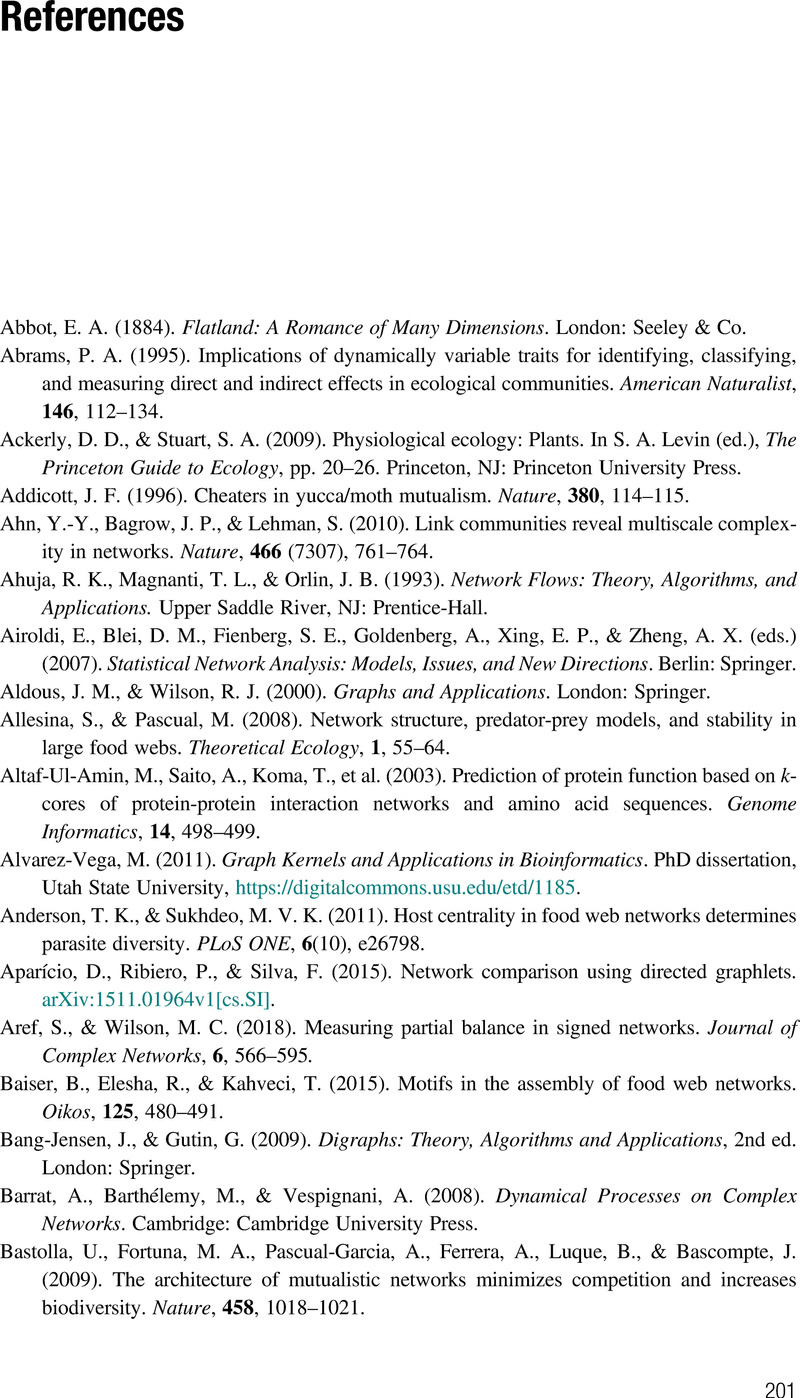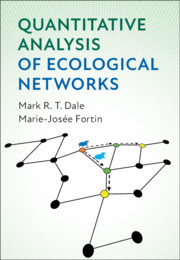Book contents
- Quantitative Analysis of Ecological Networks
- Quantitative Analysis of Ecological Networks
- Copyright page
- Contents
- Preface
- 1 Ecological Processes and Network Systems
- 2 Structural Properties of Networks
- 3 Quantitative Analysis of Dynamic Networks
- 4 Multilayer, -type, and -level Networks
- 5 Tying It All Together
- Glossary
- References
- Index
- Plate Section (PDF Only)
- References
References
Published online by Cambridge University Press: 05 April 2021
- Quantitative Analysis of Ecological Networks
- Quantitative Analysis of Ecological Networks
- Copyright page
- Contents
- Preface
- 1 Ecological Processes and Network Systems
- 2 Structural Properties of Networks
- 3 Quantitative Analysis of Dynamic Networks
- 4 Multilayer, -type, and -level Networks
- 5 Tying It All Together
- Glossary
- References
- Index
- Plate Section (PDF Only)
- References
Summary

- Type
- Chapter
- Information
- Quantitative Analysis of Ecological Networks , pp. 201 - 218Publisher: Cambridge University PressPrint publication year: 2021



